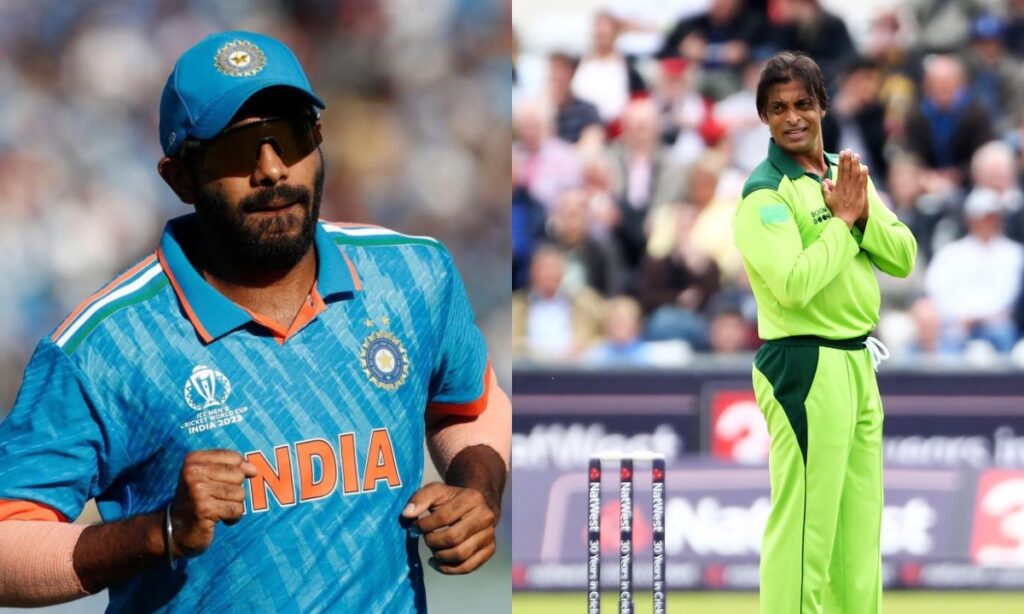In cricket, where the battle between bat and ball captivates millions, speed has always been a fascinating aspect of the game. Fast bowling, with its sheer pace and ability to intimidate, has not only been a spectacle but also a crucial element in determining match outcomes. Over the years, a handful of bowlers have left an indelible mark by hurling balls at speeds that have left batsmen scrambling and spectators in awe. Here, we delve into the records of the fastest deliveries in cricket history, showcasing the evolution from the raw pace of yesteryears to the refined speed of today’s athletes.
Shoaib Akhtar – 161.3 km/h
At the pinnacle stands Shoaib Akhtar, known as the ‘Rawalpindi Express’. His record-breaking delivery of 161.3 km/h (100.2 mph) during the 2003 Cricket World Cup against England is etched in cricket history. This was not just about speed; it was a moment that symbolized the peak of Akhtar’s career, blending raw talent with the courage to push physical boundaries. His ability to consistently bowl over 150 km/h made him a nightmare for batsmen, and his record has stood the test of time, symbolizing the zenith of fast bowling.
Brett Lee – 161.1 km/h
Brett Lee, another Australian speedster, shares the second spot with Shaun Tait, both having clocked 161.1 km/h. Lee’s delivery was recorded during a Test match against New Zealand in 2005. Known for his smooth run-up and aggressive approach, Lee brought more than just speed; his accuracy and ability to swing the ball at such high velocities made him one of the most feared bowlers of his era. His contribution to the art of fast bowling is immense, both in terms of record-breaking speeds and his influence on aspiring pacers.
Shaun Tait – 161.1 km/h
Shaun Tait, often overshadowed by his contemporaries, achieved his top speed during a one-day international against England in 2010 at Lord’s. Tait’s delivery was not just about speed but also about the sheer terror it instilled in batsmen, with its bounce and late movement. His career might not have been as long due to injuries, but his moments of express pace have secured him a place among the fastest bowlers ever.
Jeff Thomson – 160.6 km/h
Going back in time, Jeff Thomson, part of the legendary Australian bowling duo with Dennis Lillee, was recorded at 160.6 km/h during a Test match against the West Indies in 1975. Before the era of speed guns, Thomson’s pace was legendary, often described by contemporaries as the fastest they had ever faced. His impact on the game was profound, ushering in an era where speed became a significant weapon.
Mitchell Starc – 160.4 km/h
Bringing us to contemporary cricket, Mitchell Starc of Australia has been recorded at 160.4 km/h in an ODI against New Zealand in 2015. Starc combines speed with swing and accuracy, making him one of the most complete fast bowlers of his generation. His ability to bowl fast bouncers, devastating yorkers, and swing the ball both ways at such high speeds makes him a formidable opponent.
The fastest balls in cricket history are not just about numbers but about the moments of awe they’ve created in the sport. From Akhtar’s historic 100 mph delivery to Starc’s modern-day menace, each of these bowlers has contributed to the lore of fast bowling. They’ve not only pushed the limits of human capability but have also redefined what it means to be a fast bowler in cricket. As technology advances and training methods evolve, we might see these records challenged, but the legacy of these speed kings will forever resonate in the annals of cricket, reminding us of the sheer excitement and drama that pace brings to the game.

